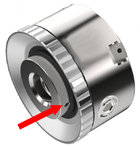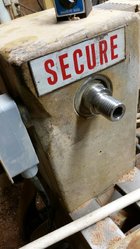I have a 4 jaw chuck that has two grub/set screws that when the chuck is threaded onto spindle the screws bottom out behind the spindle threads and add extra security so the chuck does not come off. Question, should you ALWAYS tighten these when using the chuck or only when you plan to use the lathe in reverse? I am new and started to always use them but also have forgotten to loosen them before trying to remove the chuck.  I have not run my lathe in reverse but there are probably times when I might need to, just have not gotten there yet. Thanks for any thoughts....
I have not run my lathe in reverse but there are probably times when I might need to, just have not gotten there yet. Thanks for any thoughts....



